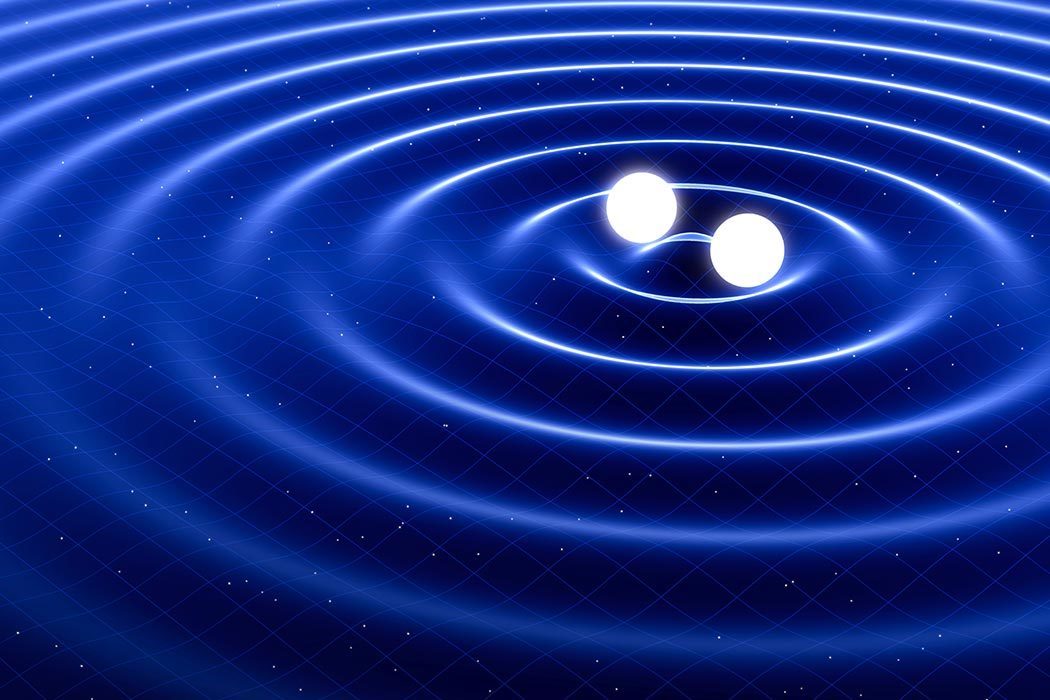Just a few short months ago, Einstein’s Theory of General Relativity celebrated its 100th anniversary. Now its last major prediction has been confirmed: the first direct evidence of gravitational waves has been detected. Gravitational waves have been considered so difficult to detect that Einstein himself at times doubted their existence. Over the past fifty years, there have been many claims of success, but they’ve all been disproven. The best evidence until now has been the indirect detection from a pulsar—work for which the two scientists, Russell Alan Hulse and Joseph Hooton Taylor Jr., received a Nobel Prize in Physics in 1993.
Writing in American Scientist in 2006, astrophysicist Craig Hogan provided an overview of gravitational waves. From Einstein’s theory, we know that an object of sufficient mass can literally bend the fabric of the universe—that is, warp space-time. Now consider an explosion. The released energy vibrates molecules, producing heat, and accelerates photons, producing light. If a strong dynamic event accelerates one or more objects of extreme mass, the curve in space-time will ripple outward at the speed of light. Those ripples are gravitational waves.
Events that can generate gravitational waves might include a supernova, a rare event in which a massive star explodes in the final stages of its life, or the merging of two black holes. The recent detection arose from the merging of two black holes 1.3 billion light years away—meaning it occurred 1.3 billion years ago.
Gravitational waves are difficult to detect because space-time is difficult to bend. In the immediate vicinity of an event, the energy involved and the space-time distortion is enormous. By the time they reach Earth, however, the waves attenuate and the space-time distortions are so faint that they can only be observed over extremely long distances. So how were they detected? The answer is LIGO, or the Laser Interferometer Gravitational-Wave Observatory. LIGO used two optical interferometers—technologies that utilize beams of light and mirrors to superimpose incoming electromagnetic waves in order to pull the necessary data—to detect these “ripples” in space-time. (For a more comprehensive understanding of LIGO and its methods for detecting gravitational waves, read here).
In addition to confirming Einstein’s prophetic prediction, the detection of gravitational waves enables astronomers and physicists to engage with the cosmos in new and exciting ways. As Hogan remarks:
Einstein’s theory of spacetime tells us that the real universe is not silent, but is actually alive with vibrating energy. Space and time carry a cacophony of vibrations with textures and timbres as rich and varied as the din of sounds in a tropical rainforest…it’s just that we haven’t heard those sounds yet.
It appears as though we finally have.







